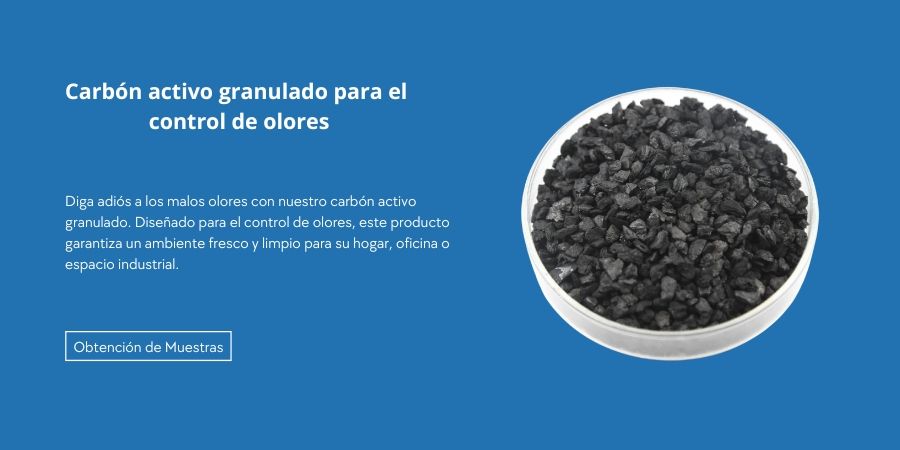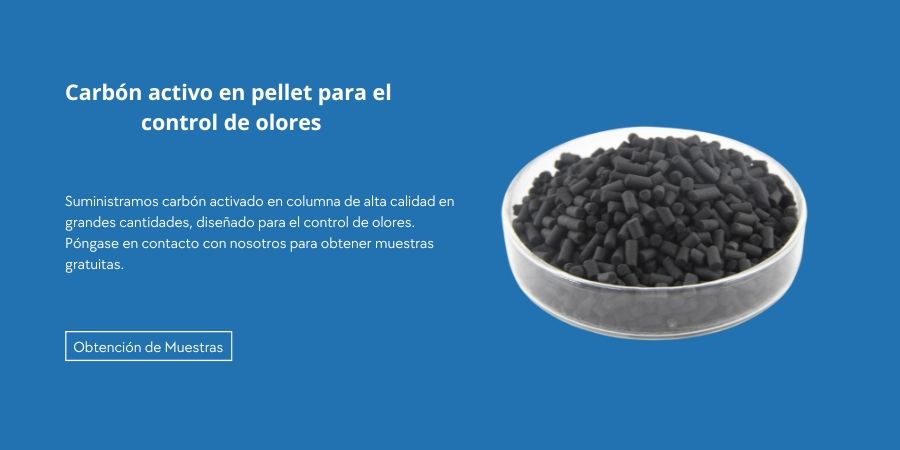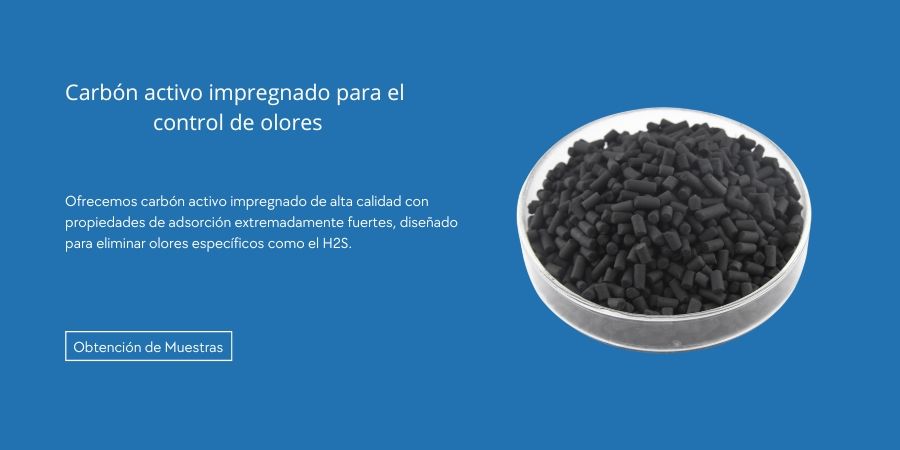Odour problems are common in many industries and homes. From wastewater treatment plants to industrial processes, unpleasant odors not only affect air quality, but can also pose a risk to public health. Activated carbon is an effective and sustainable solution, thanks to its unique adsorption properties, making it the material of choice for removing odor-causing compounds.
This article delves into the role of activated carbon in odor control, its advantages and how to select the right activated carbon for different applications.
The Need for Odor Control

Odor control is not just a matter of comfort or aesthetics; in many industries, it is a fundamental necessity to ensure health, safety and regulatory compliance. Here are some reasons why odor control is so important:
- Public health impact: Some unpleasant odors come from toxic or pathogenic chemicals. For example, gases such as ammonia or hydrogen sulfide are not only annoying, but can also damage the respiratory system.
- Improved quality of life: Prolonged exposure to unpleasant odors affects quality of life, especially in industrial or urban areas. Effective odor control can reduce stress and discomfort and improve productivity in the work environment.
- Regulatory compliance: Many industries have strict regulations on odor emissions. Companies that do not comply with these regulations can face financial penalties or reputational damage. The use of activated carbon for odor control helps companies comply with these regulations.
What is Activated Carbon and how does it work for Odor Control?

Activated carbon is a porous material, derived from raw materials such as coconut shell, wood or charcoal, with a highly porous internal structure that gives it an extremely large specific surface area, ideal for adsorbing compounds in the air.
In odor control, activated carbon works through a process called adsorption, where contaminant molecules adhere to the surface of the material. This makes it the ideal choice for capturing substances such as:
- Volatile Organic Compounds (VOC): such as benzene, toluene and xylenes.
- Sulfur compounds: such as hydrogen sulfide (H₂S) and mercaptans, responsible for the "rotten egg smell".
- Ammonia and nitrogen compounds: common in industrial and agricultural environments.
Due to its versatility, activated carbon is widely used in air filtration systems, adsorption towers and industrial purifiers.
Request a QuoteOdor Control Applications
Activated carbon is applied in several areas for odor control, mainly in the following scenarios:
Wastewater Treatment

Wastewater treatment facilities are a common source of odors, and activated carbon plays a crucial role in this area:
- Hydrogen sulfide removal: is used in sewage pumping stations, manholes and other critical points.
- Odor control in treatment plants: addresses odors generated during aerobic and anaerobic processes.
- Digestion gas purification: eliminates odors generated in the sludge digestion process and purifies the biogas, increasing its usable value.
Food Industry

The food industry has stringent odor control requirements, and activated carbon provides an ideal solution:
- Odor control in food processing: eliminates odors generated during processes such as baking and frying.
- Elimination of odors in storage areas: protects the raw material storage environment and prevents finished products from being affected by bad odors, extending their shelf life.
- Treatment of cooking gases: ideal for controlling odors generated in industrial kitchens and food processing areas.
Industrial Installations
In various industrial facilities, activated carbon odor control systems are essential:
- Air purification in the workplace: is used to eliminate odors generated by organic solvents in the production process.
- Industrial emissions control: treats industrial exhaust gases, eliminating volatile organic compounds (VOCs).
Waste Management Facilities

Waste handling generates a variety of odors, and activated carbon can effectively control them:
- Odor control in waste transfer stations.
- Landfill gas treatment.
- Gas purification in waste incineration plants.
Medical Facilities
Air purification in medical environments is crucial, and activated carbon plays a key role in this:
- Hospital air purification.
- Gas treatment in laboratories.
- Odor control in medical waste management areas.
Commercial Establishments
In commercial settings, activated carbon is commonly used to maintain an environment free of unpleasant odors:
- Air purification in shopping malls.
- Odor control in restaurant and dining areas.
- Treatment of gases in subway parking lots.
Activated Charcoal for Odor Control
Selecting the right type of activated carbon is crucial to achieve the best odor control results. Some of the most common types of activated carbon are described below:
Granulated Activated Carbon

The cgranular activated carbon has a large specific surface area and a developed porous structure, which allows it to effectively adsorb volatile organic compounds (VOCs) and other odorous compounds in the air.
It is suitable for most general odor control needs and is commonly used in industrial gas treatment, wastewater treatment plant odor removal and indoor air purification.
Activated Charcoal Pellets

Our pelletized activated carbon has a high mechanical strength and low pressure drop design, which allows for more efficient gas flow and maintains high adsorption capacity even at high flow rates.
It has excellent ability to adsorb gases such as hydrogen sulfide (H₂S), methanethiol, dimethylsulfide and other sulfur compounds and VOCs. It is ideal for large-scale odor control applications and high capacity air purification systems.
Impregnated Activated Carbon

The impregnated activated carbon has been chemically modified (e.g. by impregnation with acidic or basic reagents) to give it specific adsorption properties. This type of carbon is particularly effective in removing certain types of odorous compounds, such as hydrogen sulfide and ammonia.
These types of activated carbon demonstrate exceptional performance in odor control and, depending on your specific needs, you can choose the right type for your application.
Conclusion
Odor control is a key function in many industries, and activated carbon has established itself as the preferred solution due to its high efficiency. It not only eliminates bad odors, but also improves air quality.
If you are looking for a reliable and effective solution for odor control, high-quality activated carbon products from PuroCarbon S.L. can meet your diverse needs. Contact us at contact with us today for more information or a customized quote.
